Lec 6: Clinical vs Statistical significance, directioned tests, Reliability/Validity
1/34
There's no tags or description
Looks like no tags are added yet.
Name | Mastery | Learn | Test | Matching | Spaced |
|---|
No study sessions yet.
35 Terms
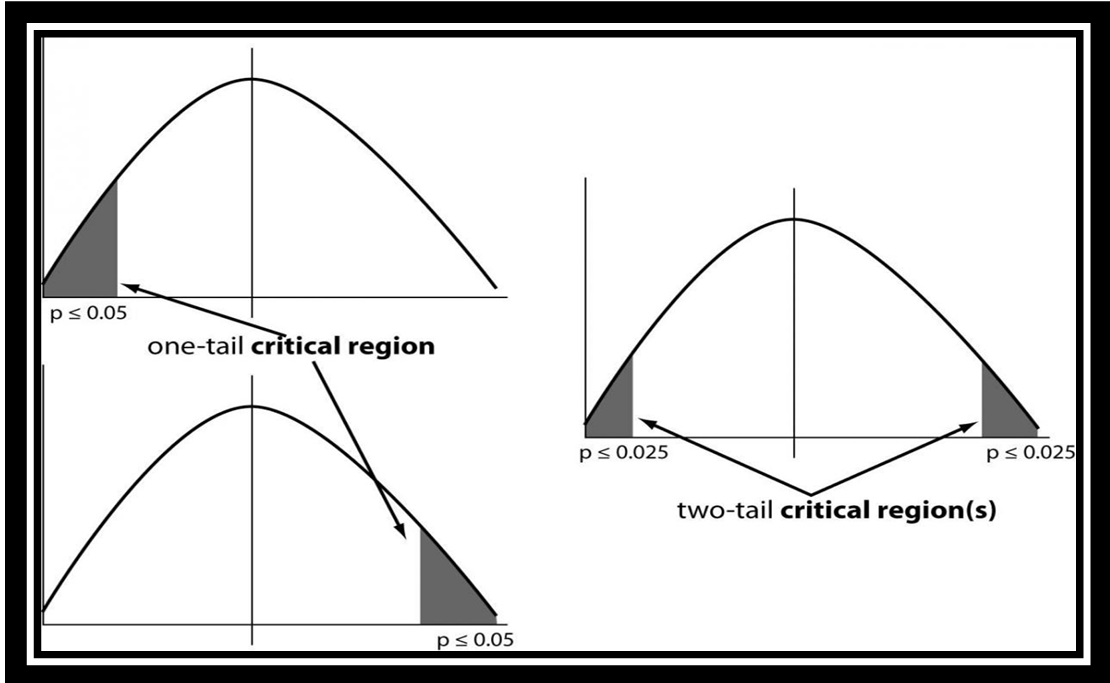
one tailed test meaning
suggests null hypothesis should be rejected when test value is in the critical region on one side of the mean
can be left or right tailed=depending on the direction of the inequality of the alternative hypothesis

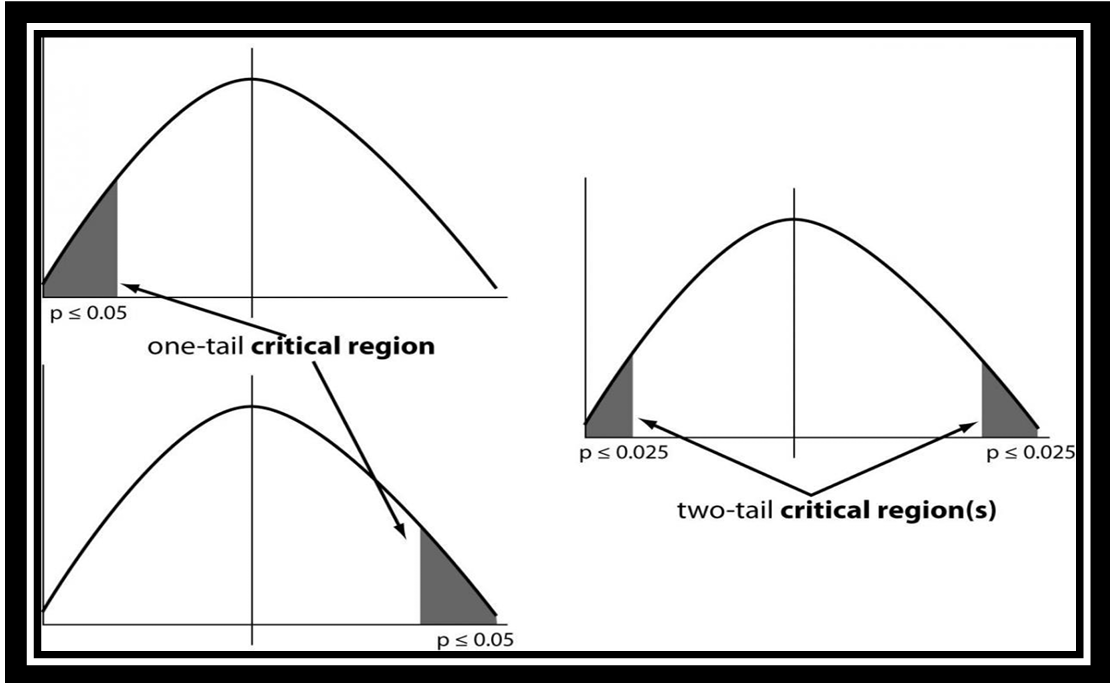
two tailed test meaning
null hypothesis should be rejected when the test value is in either of the two critical regions
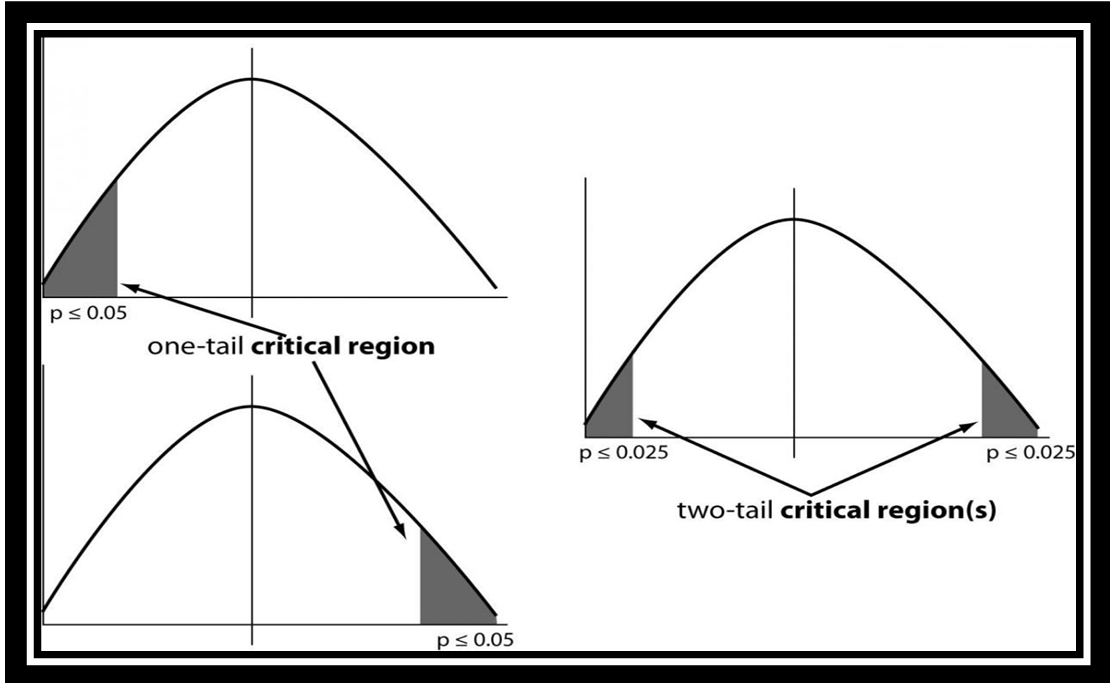
statistical significance vs clinical significane
statistical significance may not be clinically useful while clinical is
reliability def
extent to which a test consistently measures whatever it purports to measure
aka when your measurement tool is consistent and repeatable
what does reliability depend on
variables are free from random errors
consistency of repeating the measure
what does high reliability indicate
the measurement system produces similar results under the same conditions
stability def (characteristics)
consistent & enduring
does not change over time
high correlation coefficient when administered repeatedly (diff results should be similar
evaluate stability at the beginning & throughout the study
homogeneity def/characteristics
extent to which items on a multi-item instrument are consistent with one another
aka internal consistency reliability (diff methods/questions=same results)
useful for single concept
assessed with cronbach’s alpha (ranges from 0/no reliability to 1/complete reliability)
Equivalence def
how well multiple forms or users of the instrument produce the same results
variation: diff forms of tool or user error/understanding
when multiple individuals are collecting data, ensure inter-rater reliability
what are the diff types of reliability
equivalency reliability
stability reliability
internal consistency
inter-rater reliability
intra-rater reliability
Equivalency Reliability def
extent to which two items measure the same concepts at identical level
Stability Reliability def
measuring variable over time
Internal Consistency def
extent to which test assess the same characteristic
Inter-rater Reliability def
extent to which two or more individuals (raters) agree
Intra-rater Reliability def
same assessment completed by same rater on two or more occasions
what does % Agreement or Kappa statistic measure
inter-rater reliability
list sTATISTICAL MEASURES OF RELIABILITY
% agreement or kappa statistic
cronbach’s alpha = correlation of items, ranges from 0 to 1, >0.8 good
factor analysis=relationships between items and item reduction
rest-retest=correlation between test 1 and test 2
what does validity/accuracy depend on
the form of test
the purpose of test
the population to whom it is intended
what is validity checking for
the appropriateness of the data rather than whether measurements are repeatable
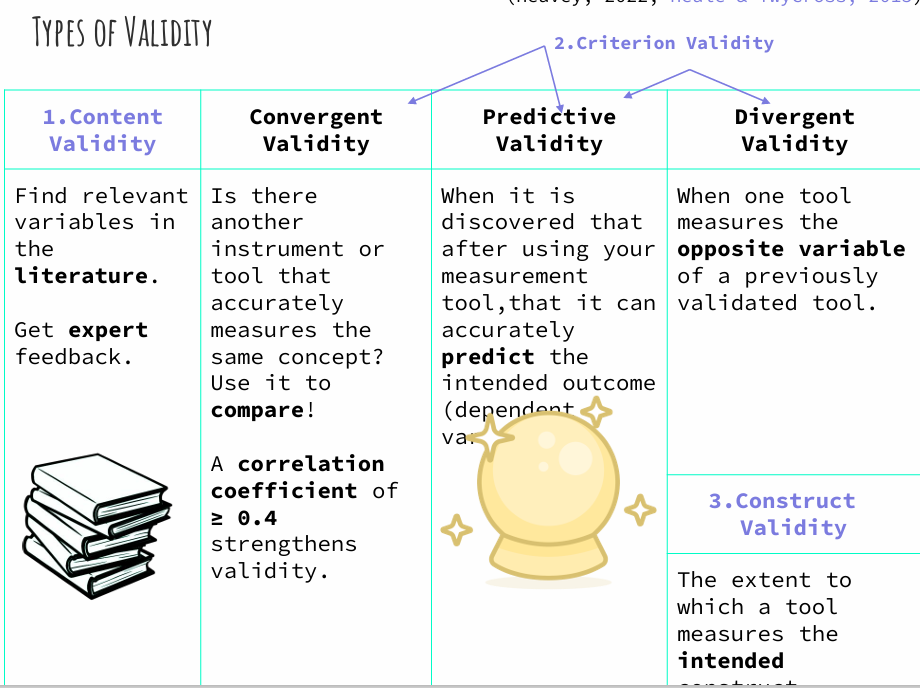
lists the diff types of validity
face validity/content validity
criterion validity
convergent validity
discriminant validity
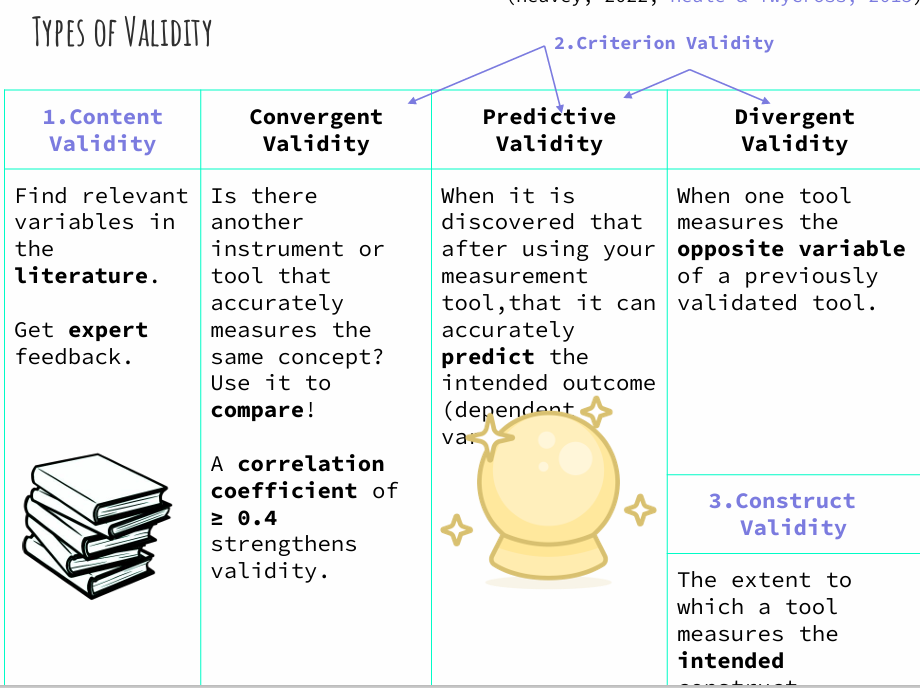

face validity/content validity
depends on the judgement of the observer (interviews/focus groups)
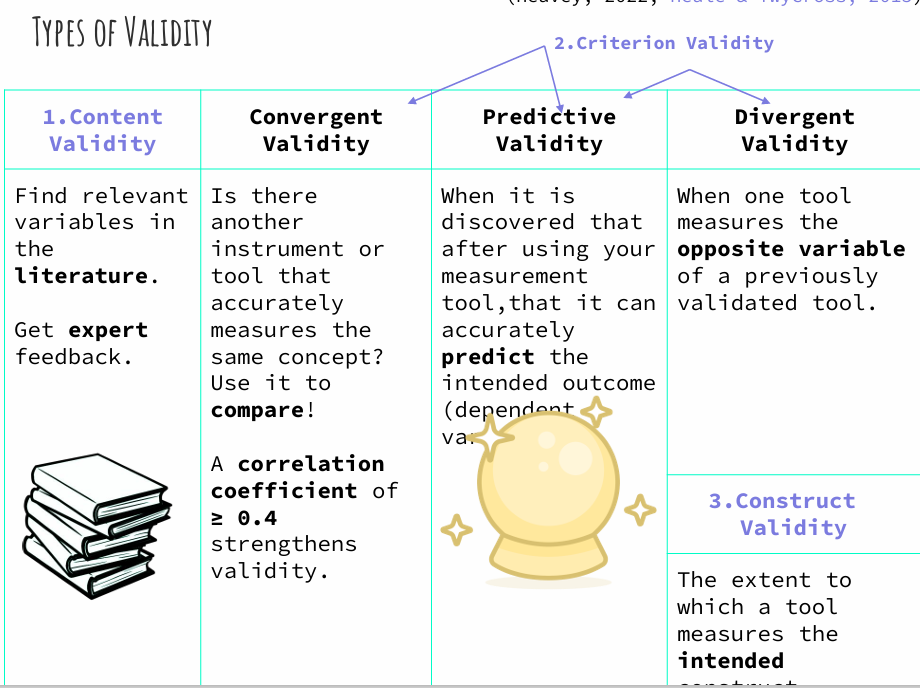
criterion validity
examine correlations with variables that you expect to be linked (relate with standards)
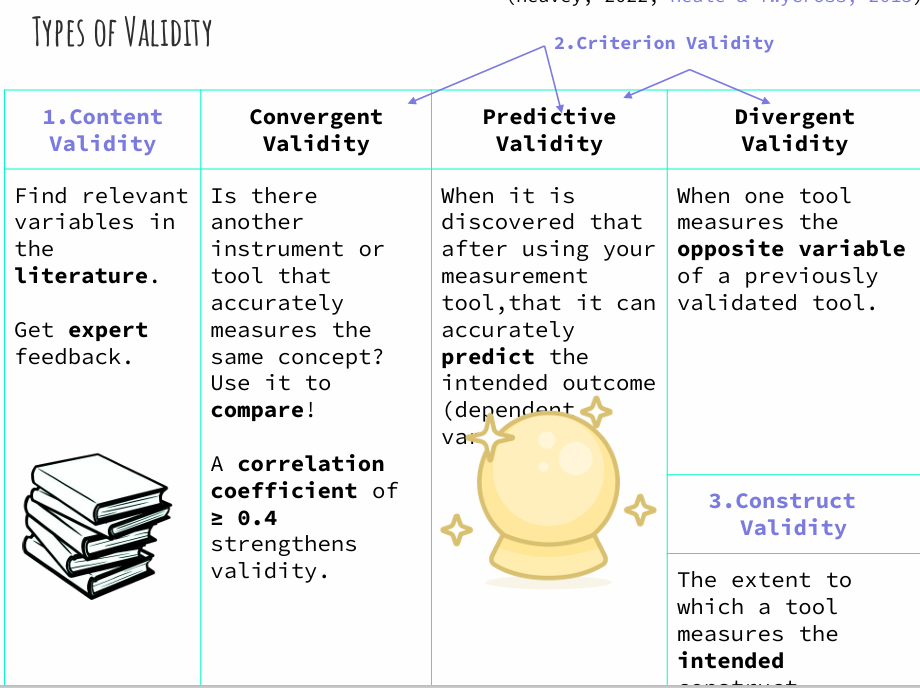
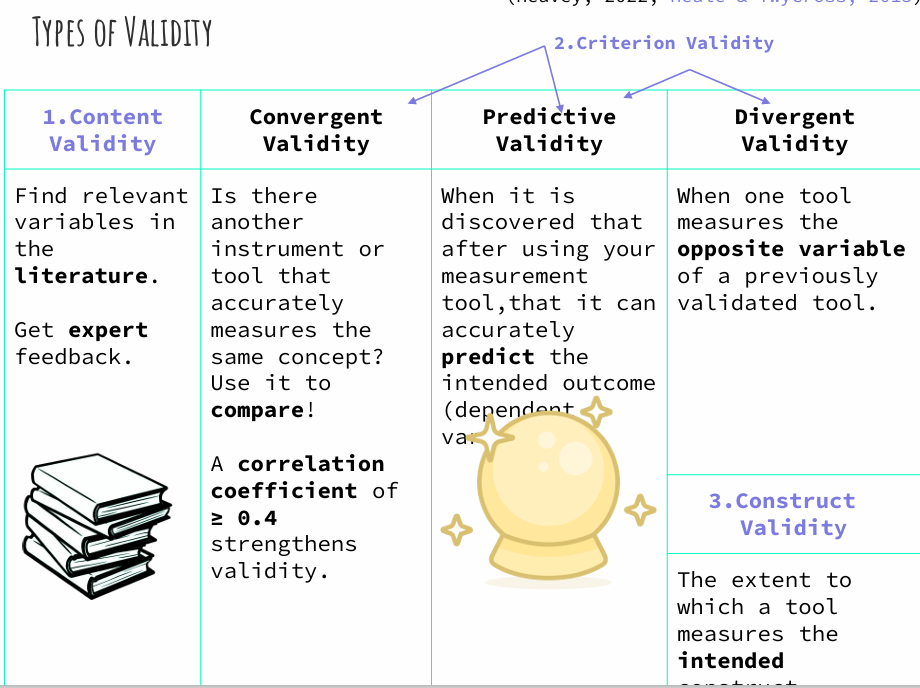
convergent validity
examine correlations with existing tools/ measures or instruments
comparing your results with those of a previously validated survey that measures the same thing
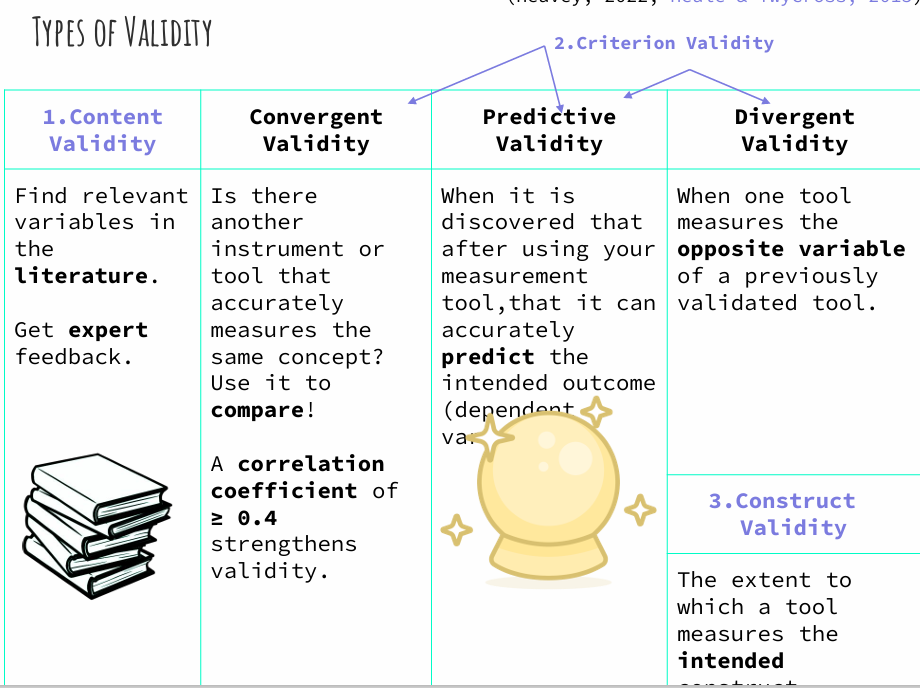
Discriminant validity def
doesnt measure what it shouldnt
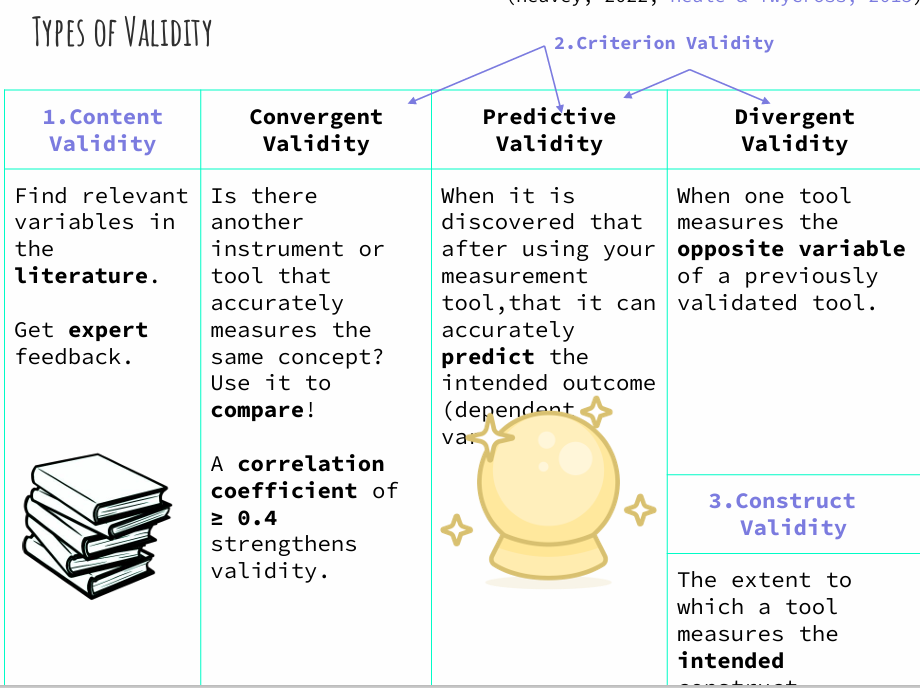
validity def
extent to which a concept or variable is ACCURATELY measured
a correlation coefficient of ≥ 0.4 strengthens validity
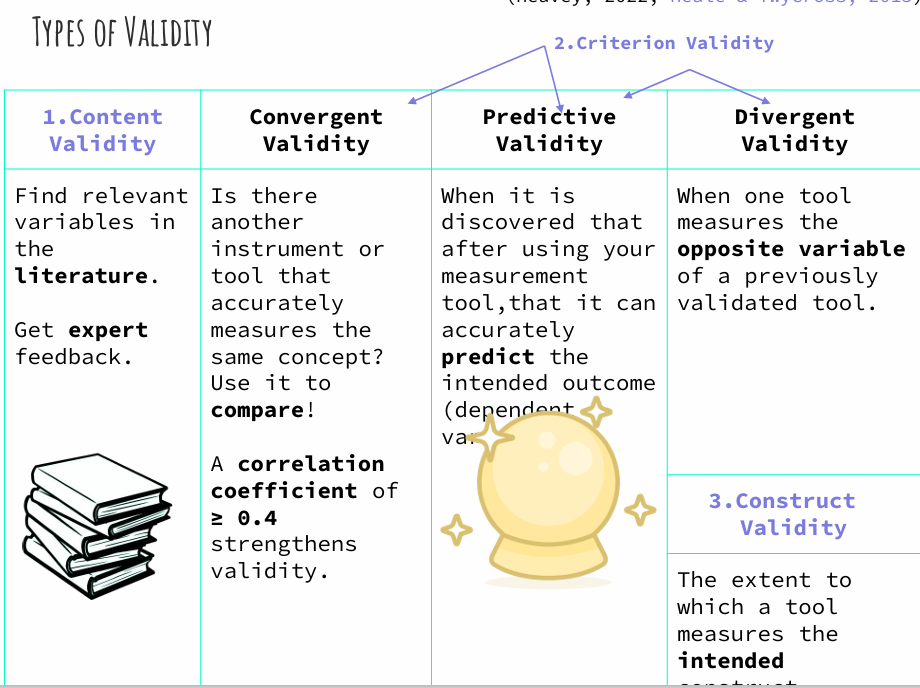
predictive validity
when it is discovered that after using your measurement tool that it can accurately predict the intended outcome (dependent variable)
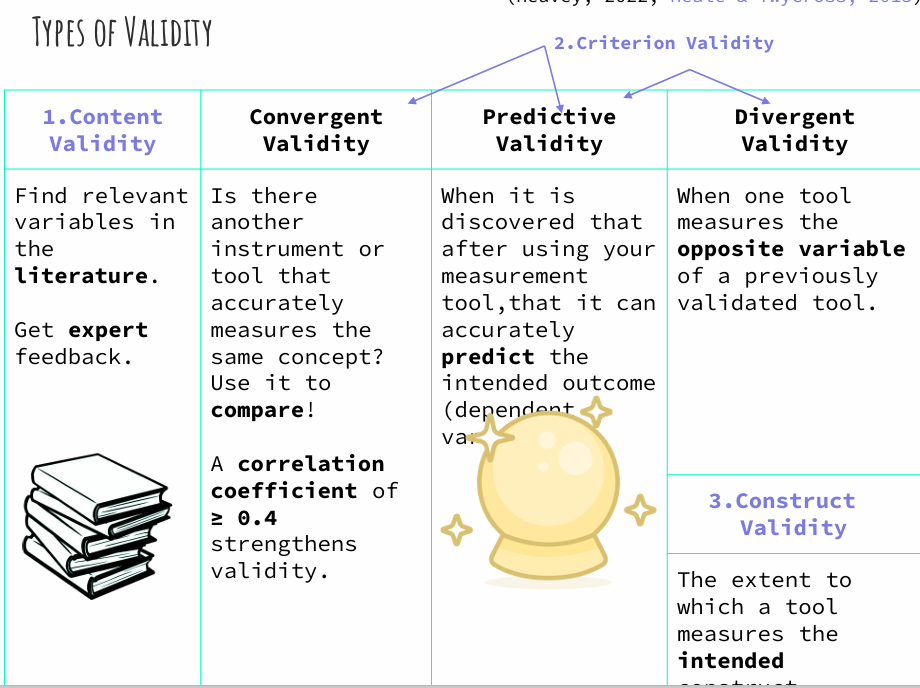
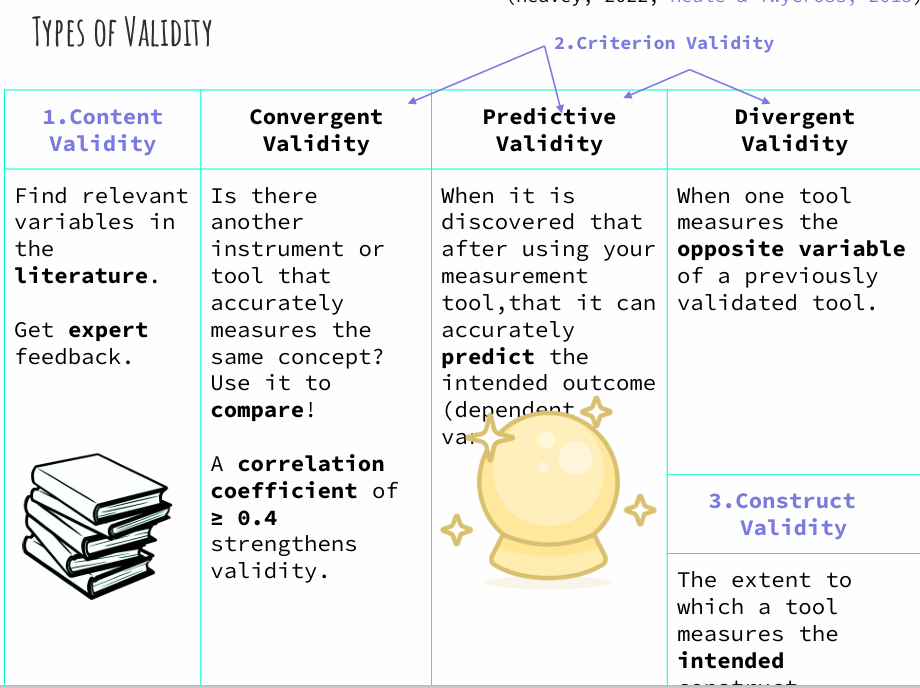
divergent validity
when one tool measures the opposite variable of a previously validated tool
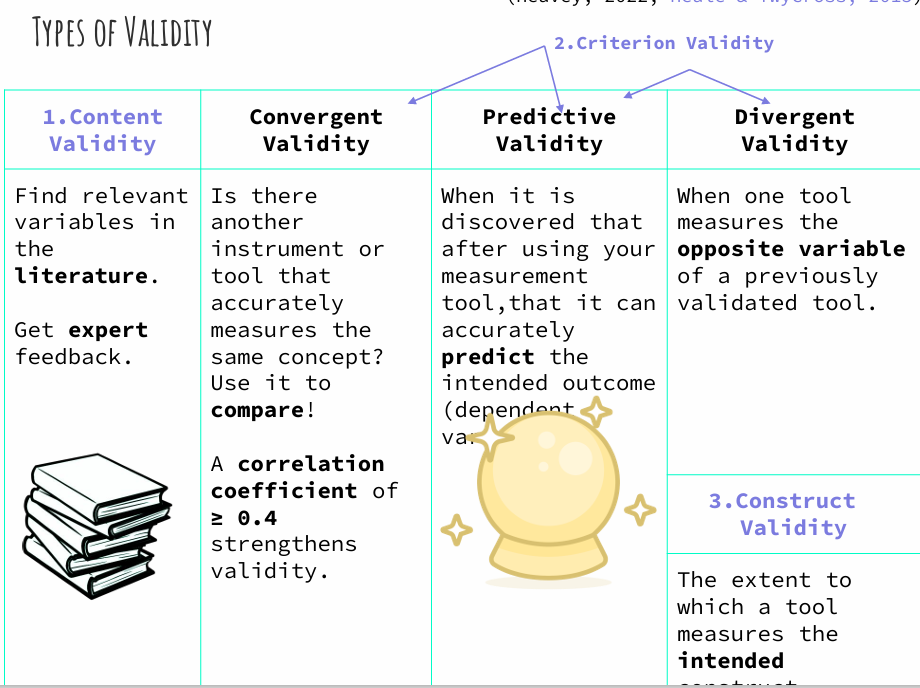
a measurement must be reliable first before it can be…
For a test to be valid it has to be reliable!
valid
a test can be reliable but it doesn’t mean it is valid/accurate

SELECTION OF MEASUREMENT TOOLS pic
IDEALLY = WANT HIGH ACCURACY AND HIGH PRECISION
Validity (Accuracy) = the degree to which measuring the true value. How close are you to measuring the true value?
Reliability (Precision) = how repeatable are the measurements. How close are the repeated measures to each other?
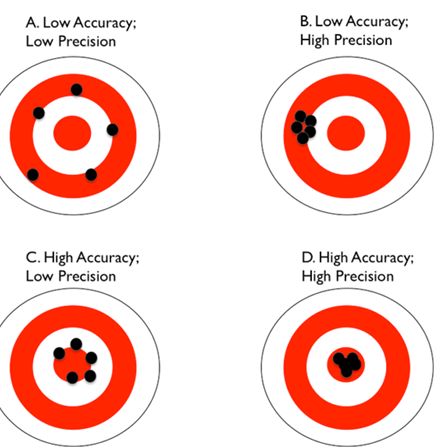
In order to determine if measurements are reliable and valid we need to examine
error
types of error
random=variations day to day, moment to moment
systematic=errors associated with incorrect measurement tool, design of study, bias
acceptability
extent acceptable to target group
language and format
indicators: response time, response rate, missing data
Feasibility
how easy the tool is to use
practicality
time
cost
resources
construct validity
detected a diff that was known to exist in a population, confirms concept
what 3 main factors make up reliability
stability
homogeneity
equivalence